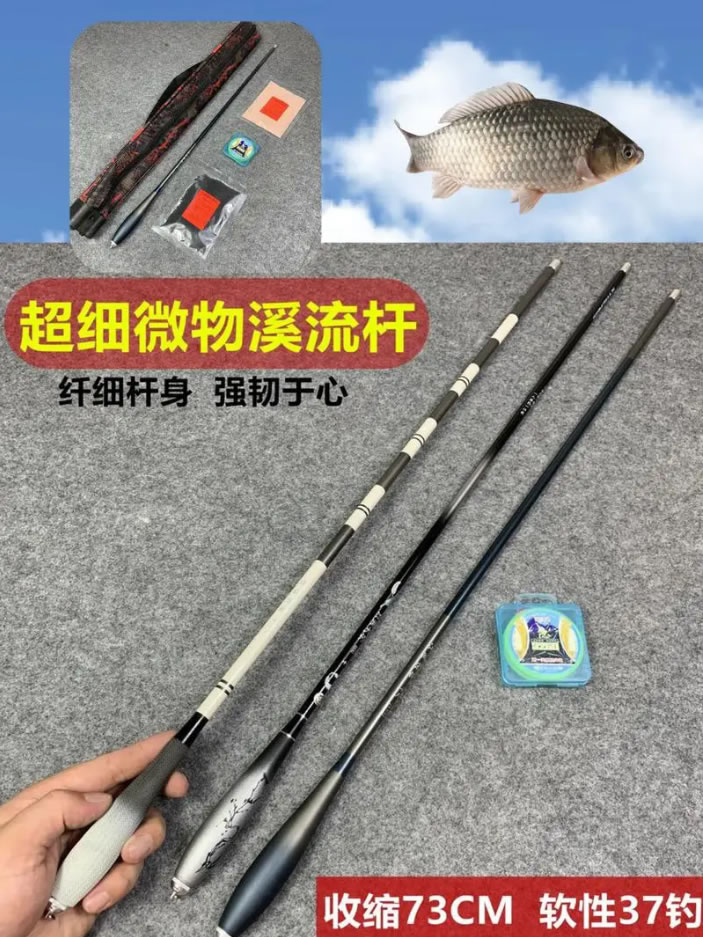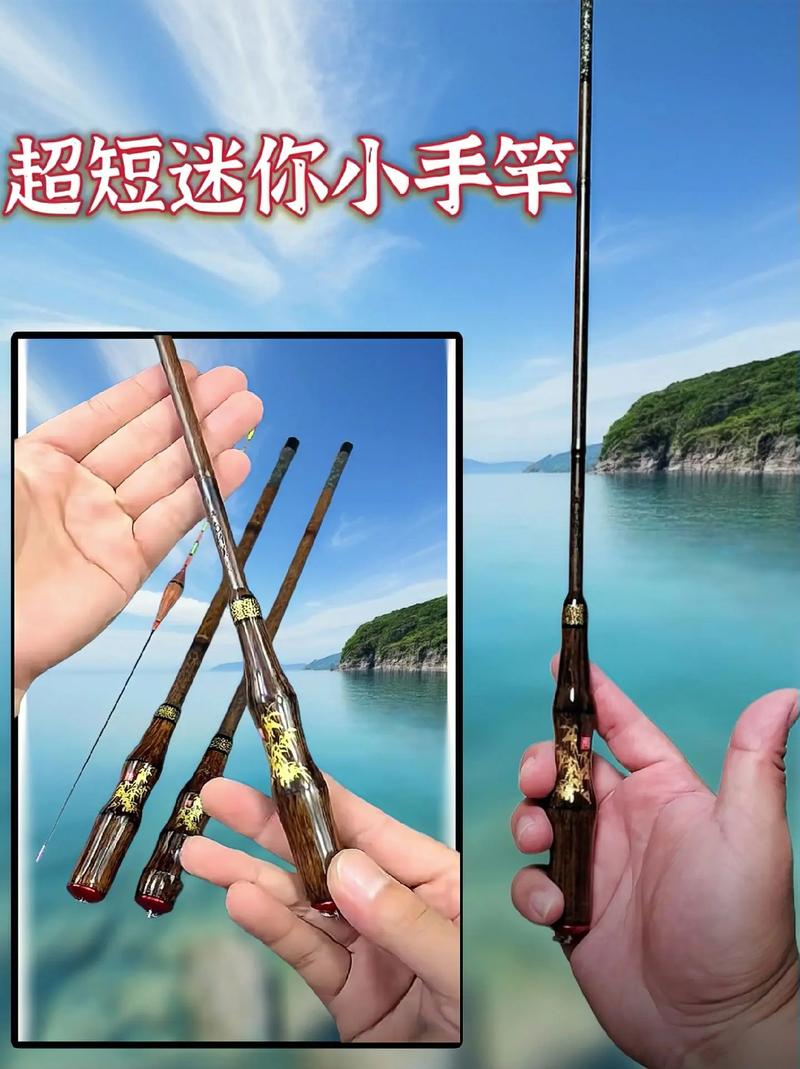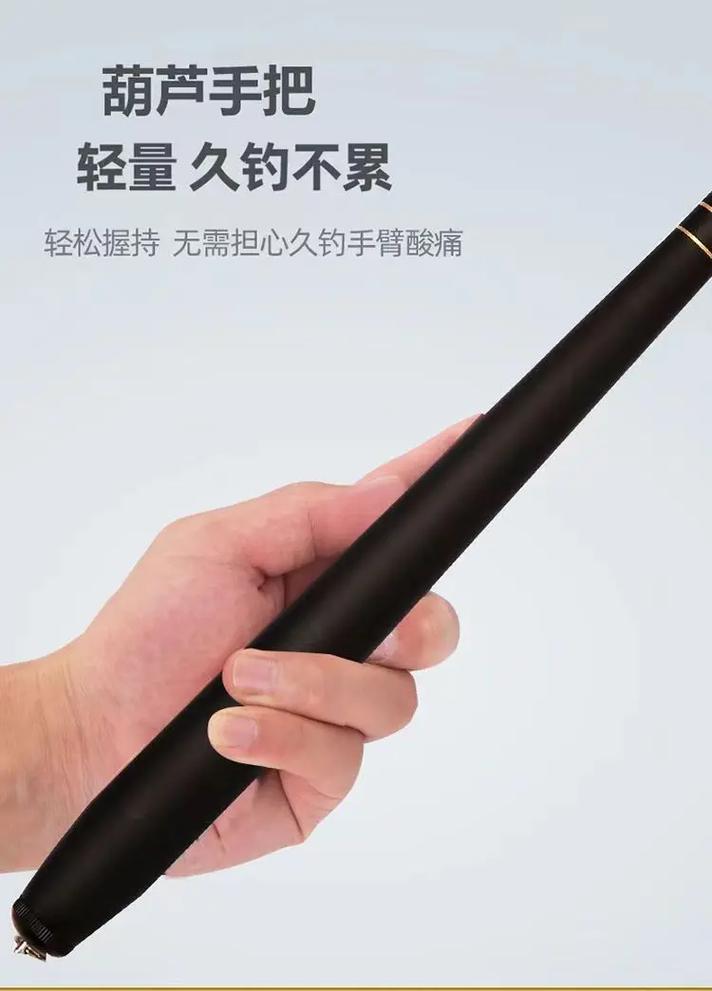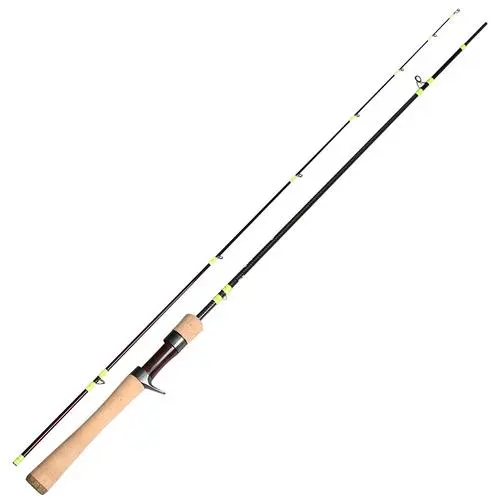Stream rod
2024-09-26 11:51:13What is a stream rod
Stream rod is a fishing rod specially used in mountain streams, shallows with rapid water flow. It is mainly used to fish for small and medium-sized fish such as horse mouth fish, long-knot fish, short-bearded jaw fish and other small and medium-sized fish.

Characteristics of stream rods
1.Stream rod is more portable:
The design of stream rods pays great attention to portability, and its shrinking length is relatively short, making it more convenient for anglers to carry and transport. This is especially important for fishing enthusiasts who need to hike to fishing spots or need to cross complex terrain. The length of the stream rod after shrinking is mostly 58 cm or 37 cm. Some stream rods also have a shrinkage length of between 60 and 80 cm, making it easy to carry.
2.There are many stream rod sections:
The number of rod joints of stream rods is relatively large, and this design allows the fishing rod to deal with various fishing spot environments more flexibly after being unfolded. In narrow streams or complex shore environments, the multi-knot designed stream rod makes it easier to adjust the angle and length for optimal fishing results.
3.The rod body of the stream rod is light:
Although the stream rod has many joints, its overall design usually focuses on lightweight to reduce the fatigue of anglers when holding the rod for a long time. Especially the stream rod made of carbon material is favored by fishing enthusiasts for its light weight and excellent performance.
4.Stream rods are tough:
The tip of the stream rod is usually solidly designed or reinforced to make it have good toughness. This toughness not only allows the stream rod to react quickly when dealing with small fish, but also maintains sufficient strength and stability when encountering large fish, making it difficult to break, and is suitable for use in complex water environments.
5.Stream rods are highly adaptable:
Stream rods are not only suitable for small water environments such as streams and small rivers, but can also play a role in larger waters such as rivers, lakes and reservoirs. Its flexible design and excellent performance allow anglers to choose appropriate fishing methods and fishing gear according to different fishing spot environments and target fish species.
6.The stream rod feels delicate:
Because the rod body of the stream rod is light and has many joints, anglers will feel a more delicate feel when holding the rod. This feel not only helps anglers better perceive fishing news, but also improves the fun and experience of fishing.

The length of the stream rod
Generally speaking, stream rods are more common in length between 2.7 meters and 5.4 meters, but there are also longer stream rods such as 6.3 meters and 7.2 meters.
Specifically, the length of the stream rod is divided into the following types:
1.Short rod(below 2.7 meters):
It is suitable for streams with rapid water flow and complex environment, or for occasions where frequent moving fishing spots are required. The short rod is easier to operate and carry, and can quickly adapt to different fishing environments.
2.Medium-length rod(2.7 meters to 3.6 meters):
It is suitable for general waters such as streams, rivers, and occasions where a certain ability to fish far away is required. This length of stream rod can not only meet the needs of close-range fishing, but also take into account certain fishing ability.
3.Long rod(3.6 meters or more):
Suitable for open and gentle water areas, or when fishing for deep water areas or far water areas. The long rod can cover a larger fishing range, making it easier to fish in deep water or fish in far water areas.
The length of the stream rod is not the longer the better or the shorter the better, but the appropriate length should be selected according to the specific fishing environment and target fish species. Different brands and models of stream rods may also vary in length, so when choosing, you need to choose according to your needs and preferences.

The material of the stream rod
The materials of stream rods are diverse and can be divided into two categories: glass fiber (fiber fiberglass) and carbon fiber (carbon).
1.Fiberglass(Fiberglass)
Advantages of fiberglass fishing rods:
High intensity: Fiberglass fishing rod has good toughness and elasticity, can withstand large tension and is not easy to break.
Strong and durable: The fiberglass material is relatively sturdy and has a long service life.
Good insulation: Fiberglass fishing rod has good insulation and is safer to use.
Disadvantages of fiberglass fishing rods:
Great self-esteem: Compared with carbon fiber, fiberglass fishing rods are more weight and may feel fatigued after long-term use.
Poor hand feel: Due to its large weight, the fiberglass fishing rod may not feel as delicate as the carbon fiber fishing rod in the hand.
2.Carbon fiber(Carbon)
Advantages of carbon fiber fishing rods:
Light: The carbon fiber fishing rod has an extremely light weight, allowing anglers to reduce fatigue when holding the rod for a long time.
Strong hardness: Carbon fiber material has high hardness and tensile strength, and can cope with large tensile forces without easy deformation.
Conductivity: Although carbon fiber fishing rods are conductive, under normal use, this characteristic has little impact on fishing activities. However, when used in specific environments such as thunderstorms, anglers need to pay attention to electricity protection.
durable: The carbon fiber fishing rod is also very durable and can withstand the test of multiple uses and different environments.
Disadvantages of carbon fiber fishing rods:
Higher price: Compared with fiberglass fishing rods, carbon fiber fishing rods are more expensive to manufacture, so they are relatively expensive.

Use scenarios of stream rods
Stream rods originally specifically refer to fishing rods used in mountain streams, but with the changes in the needs of fishing enthusiasts, their use scenarios have gradually expanded to large waters such as rivers, lakes and reservoirs. Especially when fishing in leisure, many anglers prefer to use portable stream rods.
Here is a detailed introduction to the use scenarios of stream rods:
1.Stream fishing
The stream rod was originally used to fish in streams. This fishing rod is specially designed for fishing small fish such as crucian carp in small waters such as mountain streams and streams. It has the characteristics of lightness and easy to port, high sensitivity and strong durability. In streams, the flow is usually relatively flat, but complex flows and terrain may also exist, so the flexibility and portability of stream rods are particularly important. Using stream rods to fish in streams can make it easier to deal with various environments and improve the fun and success rate of fishing.
2.Large waters such as rivers, lakes and reservoirs
As time goes by, the concept of stream rod has expanded and now usually refers to a hand rod with a length of no more than 80 cm after shrinkage. Because of its portability, this fishing rod is not only suitable for streams, but also widely used in large waters such as rivers, lakes and reservoirs. In these large waters, the lightweight nature of stream rods makes it easier to carry and operate, especially among leisurely wild fishing enthusiasts. Whether it is still water fishing or flowing water fishing, stream rods can play their unique advantages.
3.Other specific occasions
In addition to the above main usage scenarios, stream rods can also be applied to other specific occasions according to specific circumstances. For example, when fishing at fixed fishing spots such as bridges and rafts, the stable performance and moderate sensitivity of the stream rod can help anglers better perceive the fish's activities and improve the efficiency and fun of fishing. In addition, stream rods are also a good choice for beginners in fishing. Its price is relatively affordable and its performance is stable and reliable. It can help beginners quickly master fishing skills and enjoy the fun of fishing.

What to pay attention to when using a stream rod
1.Choose the right stream rod
Length selection: The length of the stream rod is usually between 2.7 meters and 5.4 meters, and there are also 6.3 meters and 7.2 meters to choose from. The length selection is mainly determined based on the fishing environment and target fish species. Generally speaking, for streams with rapid water flow and complex environment, it is easier to use shorter rods to operate and carry; while in relatively open and gentle water flow areas, you can choose a slightly longer rod to increase your ability to fish far.
Tone selection: Tone refers to the softness and hardness of the rod, which is usually divided into hardness, medium hardness and softness. The tone selection is mainly determined based on the target fish species and fishing method. The hard-adjust rod responds quickly and is suitable for fishing large fish; the soft-adjust rod has good toughness and is suitable for fishing small fish.
Weight and Material: A lightweight rod is more labor-saving to use and is suitable for long-term holding of rods. However, it should be noted that a rod that is too light may be prone to bend excessively when catching a large fish, which will affect the operation. In terms of material, the carbon fiber rod is light, hard and straight, suitable for fishing that requires rapid reaction and precise control, and has good corrosion resistance; the glass fiber rod is relatively heavier, but has good toughness and durability.
2.Pay attention to fishing skills
Bait selection: The choice of bait should be determined based on the target fish species and season. Generally speaking, commercial bait with a fishy smell is more commonly used in stream fishing, and it is recommended to add appropriate flour to the bait to increase hooking properties and prevent the bait from being washed away by the stream water.
Fishing spot selection: When fishing in streams, you can choose some places where fish are hidden, such as small back bays, streams and slow intersections, etc. These locations usually have a slow flow and abundant food, making them a good place for fish to gather.
Fishing method selection: Choose the appropriate fishing method according to the specific situation of the stream. For example, in streams with faster flow rates, a floatless fishing kit or a similar fly fishing method can be used; in streams with slow flow rates, a vertical float fishing kit or a seven-star float fishing kit can be used.
3.Pay attention to safety and environmental protection
Anti-slip shoes and wading pants: Because stream fishing often requires hiking the stream, you must choose a suitable pair of anti-slip hiding shoes, and wear protective equipment such as wading pants when it is cold.
Protect the environment: During the fishing process, pay attention to protecting the environment, not littering, and not destroying vegetation and ecological balance.
4.Maintenance of fishing rods
Rod body cleaning: After fishing, water stains and mud on the rod should be cleaned in time to prevent corrosion or scratching the rod body.
Rod joint care: The action should be light when pulling the rod and closing the rod to avoid violent operation to prevent the rod joint from wear, loosening or cracking and breaking the joint. Apply some glue regularly to polish the rod joints to maintain their roundness and clamping force.
Rod sealing maintenance: If you no longer use the fishing rod for a period of time, you should do a good job of maintenance before the rod sealing. Fold the fishing rod and clean it and dry it. Apply the rod oil (or alternatives such as cooking oil, lubricating oil, wax, etc.), then assemble it and store it in a cool place.
To sum up, a stream rod is a fishing rod suitable for fishing in small waters such as streams. It has the characteristics of good portability, many joints, and good toughness. When choosing and using it, you should make reasonable choices based on your actual needs and fishing environment.
- PREVIOUS:
- Next article:carp rod
